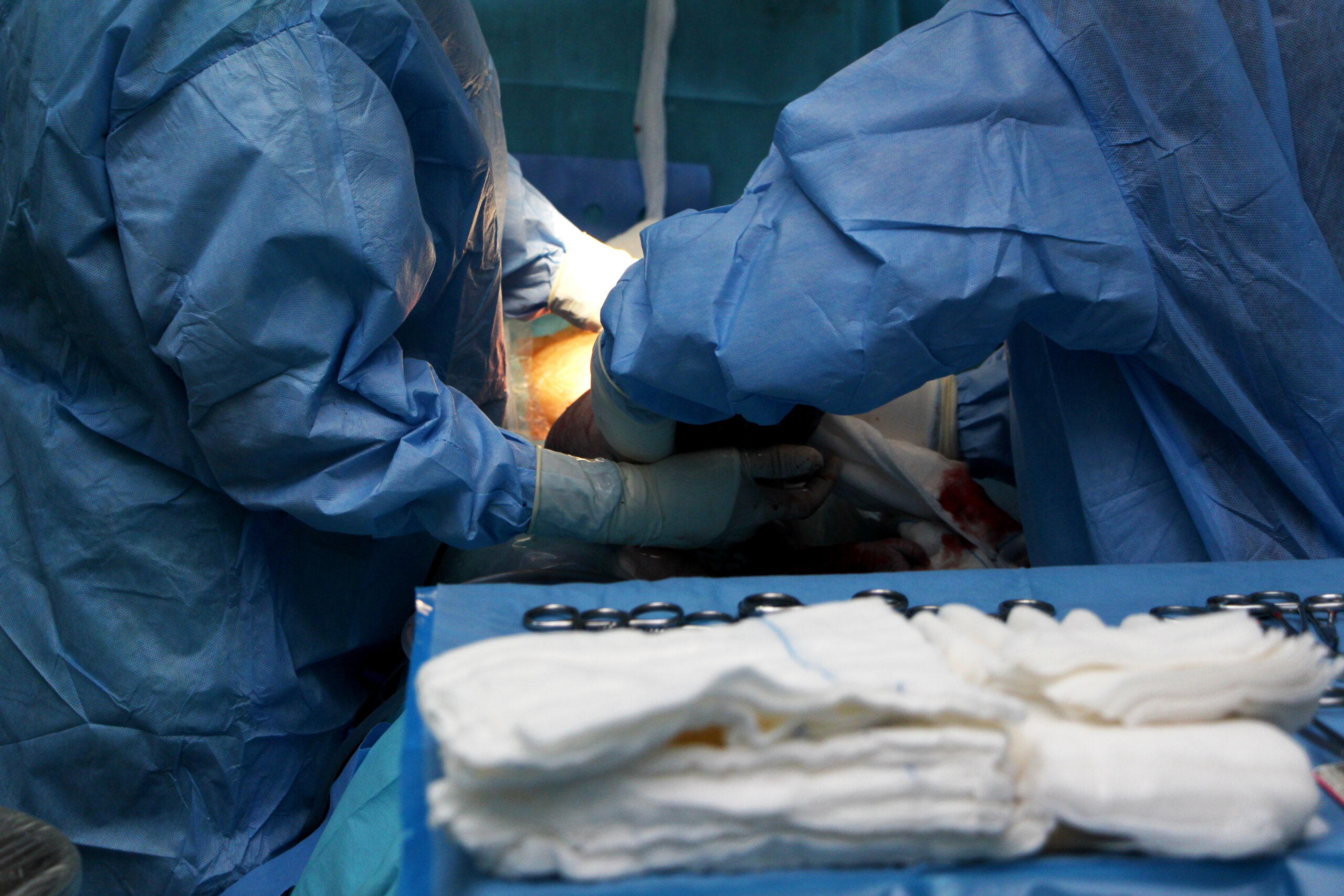Forced C-Sections: The Legal Battle Over Bodily Autonomy in Childbirth
In July 2011, Rinat Dray delivered a healthy baby boy via cesarean section, or “C-section,” at Staten Island University Hospital—against her will.

Published
Author
Share
In July 2011, Rinat Dray delivered a healthy baby boy via cesarean section, or “C-section,” at Staten Island University Hospital—against her will. Having experienced difficult recoveries from previous C-sections, Dray hoped for a natural birth. However, doctors insisted on surgery due to concerns about fetal complications and the risk of uterine rupture. The doctors overrode Dray’s refusal and proceeded with the C-section.
Dray later filed a malpractice suit against the hospital and the doctors for “pressuring and threatening her” into the C-section. While litigation remains ongoing, Dray’s case highlights a broader debate in the United States: Do pregnant individuals have the right to refuse a C-section?
Below, I discuss what a C-section is, how courts have previously considered this issue, and what the future might hold for maternal rights in childbirth.
What is a C-Section?
A C-section is a surgical method of childbirth. While most C-sections occur around the 39th week of pregnancy, emergency C-sections can happen at any time during the third semester of pregnancy and, in rare cases, late in the second trimester. The procedure involves making an incision in the pregnant person’s uterus, opening the amniotic sac, and removing the baby and placenta, before closing the incision.
Historically, C-sections were a last resort to save a baby from a dead or dying pregnant patient. However, medical advances in the 19th and 10th centuries—including improved surgical techniques, anesthesia, and fetal imaging tools—dramatically decreased maternal mortality and morbidity rates.
Today, C-sections are common interventions, accounting for approximately one-third of births in the United States. Physicians may recommend a C-section if labor is not progressing or if there are health risks to the pregnant patient or baby. Some patients may also opt for a C-section—potentially due to concerns about pain or anxiety associated with vaginal birth—although this is less common.
As with any major medical procedure, doctors and pregnant patients weigh the potential benefits against the risks of undergoing a C-section. In emergencies, C-sections may be safer than vaginal delivery. However, C-sections have elevated risks of maternal complications versus vaginal births, including higher rates of maternal mortality, longer recovery times, and increased likelihood for C-sections with following pregnancies. C-sections also can pose risks for infant health, including breastfeeding difficulties and respiratory issues. For these reasons, doctors typically recommend C-sections only when medically necessary.
Legal Considerations
Case law on court-ordered C-sections has been inconsistent. This reflects an ongoing tension between a pregnant person’s right to bodily autonomy and the state’s asserted interest in fetal life. Conflicting case outcomes hinge on varying interpretations of bodily integrity, privacy, and religious freedom.
Bodily Integrity
Both common law and the 14th Amendment establish the right to bodily integrity, which includes the principle that a competent patient can refuse medical treatment, even if it is life-saving. In other medical contexts, courts generally uphold this right. However, courts diverge on whether this right applies absolutely to pregnant patients or whether fetal rights—framed as “state’s interests”— can supersede.
For example, in In re Baby Boy Doe, the Illinois Appellate Court ruled that a pregnant person’s “right to refuse invasive medical treatment … is not diminished during pregnancy.” The court relied heavily on Stallman v. Youngquist, an earlier Illinois Supreme Court case that explicitly rejected the notion that a pregnant patient’s rights could be subordinated to fetal rights. Conversely, a Florida district court in Pemberton v. Tallahassee Memorial Regional Center, which involved a similar scenario to Doe, found that fetal rights outweighed the pregnant patient’s interest in bodily integrity.
Privacy and Reproductive Autonomy
Courts have also derived an implied Constitutional right to reproductive autonomy from the 1st, 3rd, 4th, and 9th Amendments. This follows the precedent set in Griswold v. Connecticut. In Griswold, the Supreme Court held that the Constitutional right to privacy prevented states from infringing on married couples’ right to use contraception.
This reasoning has been extended to protect broader reproductive autonomy. For example, the Supreme Judicial Court of Massachusetts in Taft v. Taft applied Griswold to vacate a lower court’s order requiring the pregnant patient to undergo a cervical cerclage to prevent premature birth. The Taft court determined that there was insufficient evidence to justify overriding the pregnant patient’s privacy rights.
However, some courts have interpreted Roe v. Wade as establishing a compelling state interest in “protecting the lives of unborn, viable children,” creating an exception to Constitutional privacy rights. In Jefferson v. Griffin Spalding County Hospital Authority, the Supreme Court of Georgia ruled that hospitals could administer any medical procedures, including C-sections, that were deemed necessary to preserve fetal life. Some courts have even extended this principle to pre-viable fetuses, compelling pregnant patients to undergo medical interventions earlier in pregnancy.
The legal landscape is evolving further in the wake of the Supreme Court’s decision in Dobbs v. Jackson Women’s Health Organization, which overturned the Constitutional right to abortion. With Dobbs enabling states to enact fetal personhood laws, courts may increasingly weigh fetal rights against pregnant patients’ autonomy.
Religious Freedom
Courts have also grappled with whether the state’s interest in protecting the fetus can override a pregnant patient’s Constitutional right to free exercise of religion. In some forced C-section cases, pregnant patients have cited religious beliefs as a primary reason for refusing the procedure.
For example, the defendant in Taft was a “born-again Christian,” who objected to a cervical cerclage due to her belief in faith healing. The Massachusetts court upheld her right to religious freedom, reinforcing the principle that religious beliefs can form the basis of a medical refusal.
However, in In re Madyun, a Muslim woman refused a C-section after prolonged labor due to her religious convictions. The D.C. Superior Court ruled that the state’s compelling interest in preserving the life of the unborn took precedence, overriding her religious objections.
The Future of Forced C-Sections
While bodily integrity is a long-standing principle in American law, courts have ruled inconsistently in the realm of C-sections. The evolving legal and political landscape post-Dobbs complicates the debate. The resolution of cases like Rinat Dray’s will have lasting implications—not only for individuals facing these decisions but for the broader landscape of reproductive justice and medical autonomy.


